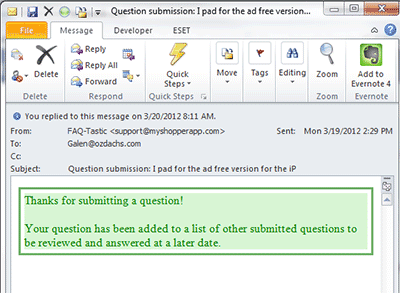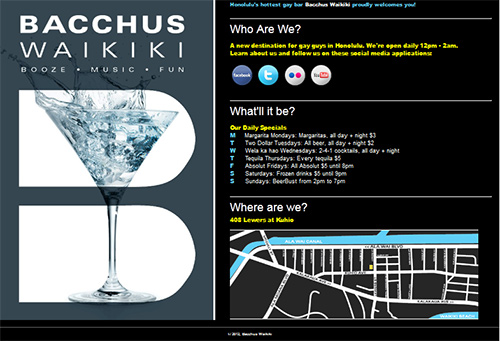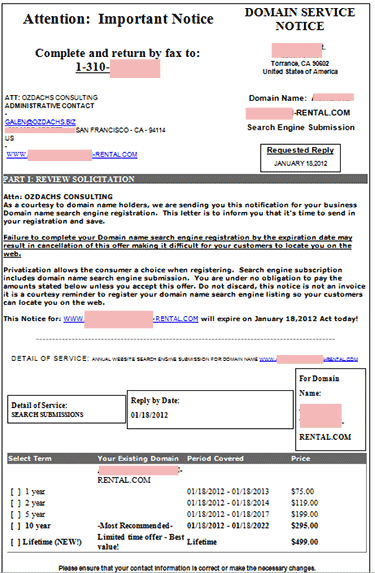Don’t Send Me This If You Want to Keep Me as a Customer!
 Automated acknowledgements can reassure clients that their message has been received and will be responded to when you’re back in the office.
Automated acknowledgements can reassure clients that their message has been received and will be responded to when you’re back in the office.
Other automated messages, like the one above, convey disinterest and unhelpfulness. Getting no response is better than getting a message like this.
Worse, this email was the only answer to my support request when I checked my mail the next day. When I saw the message in my inbox I expected that it was going to be the actual answer to my problem.
Folks, don’t tell me that you’ll get back to me “at a later date”. Geeze! The next day after never is a “later date”. If you have to, tell me something concrete yet far away like “within 10 working days”. Or better yet, hire enough people to quickly respond to your clients (adding staff actually can increase your profits because like Costco and others you get more business; read the research).
Moreover, telling me that I am one of many questions waiting around for an answer is not reassuring. It doesn’t speak well about the quality of your software, nor does it make me feel like a individual, valued customer!
I responded to this automated message with something like a “Huh? What does this mean?” Miraculously enough, the reply-to address worked, and after an hour or so I received a real answer to my original question. They told me to do something on my iPhone that I don’t know how to do, but it least their real response gives me something to work on when I have the time. I have no idea how long I would have waited for even this information if I hadn’t responded to the automated message.
This company fell victim to a common problem. They saw an available technology (auto-response email messages) and used it. They should have remembered this Ozdachism: Just because a technology exists, it doesn’t mean you should use it!


